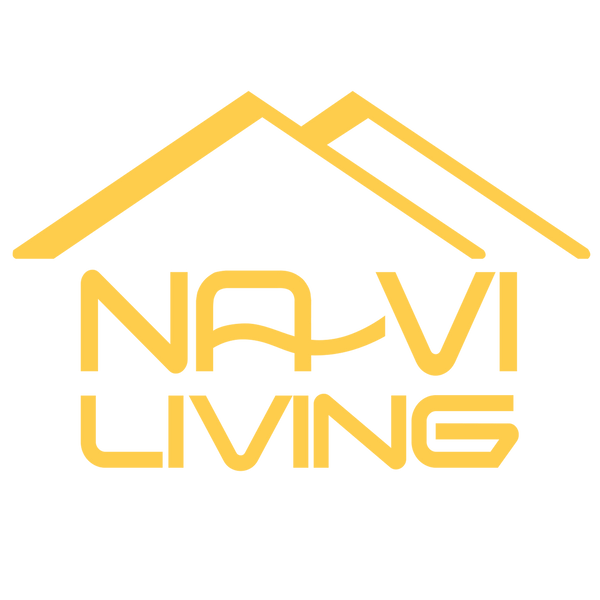Build-to-Rent (BTR) has rapidly become one of the most attractive real estate investment models, offering stable rental income and long-term growth potential. Understanding BTR profitability is essential for investors seeking to capitalize on this growing sector. From strategic location choices to professional property management, multiple factors influence returns in BTR projects. This guide explores the key drivers of profitability, how BTR compares to traditional rental models, and strategies to maximize your investment success.
- Investing in Build to Rent Long-Term Returns in Canada
- Professional Build to Rent Management - Managers Must Know
- Build to Rent vs Buy to Let: What Newcomers Should Know
Build-To-Rent: What Is It and How Can You Profit?

Build-to-Rent (BTR) is an innovative real estate investment model where residential properties are specifically constructed to be rented out rather than sold. This approach represents a shift from traditional rental markets where landlords often convert existing homes or apartments into rentals. BTR developments are strategically designed with renters in mind, offering modern layouts, high-quality finishes, and a range of community amenities such as gyms, parks, co-working spaces, and social lounges. These features create a lifestyle-focused environment that appeals to a broad demographic, including young professionals, families, and downsizers.
One of the key distinctions of BTR is the scale and professional management behind these communities. Instead of individual landlords managing scattered properties, BTR is typically owned and operated by institutional investors or real estate firms that oversee entire neighborhoods or complexes. This centralized management ensures consistent maintenance, streamlined operations, and enhanced tenant services, which contribute to lower vacancy rates and higher tenant satisfaction.
Investors can profit from BTR projects through multiple channels. The most direct source is rental income, which tends to be more stable and predictable due to longer lease terms and reduced tenant turnover. Additionally, the quality and amenities of BTR properties often justify premium rental rates compared to traditional rentals. Beyond cash flow, investors benefit from potential property appreciation over time, tax advantages related to depreciation and operating expenses, and economies of scale that reduce overall management costs. These factors combine to create a compelling investment opportunity in the evolving rental housing market.
Is Build-to-Rent Highly Profitable?

The profitability of Build-to-Rent communities has attracted significant attention from investors worldwide, and for good reason. Several factors contribute to the strong profit potential of BTR developments:
- Consistent and Reliable Rental Income: BTR properties typically maintain high occupancy levels because of their attractive design, amenities, and professional management. This consistency in occupancy translates to steady rental income, which is a critical component of profitability.
- Ability to Command Premium Rents: The modern features, community amenities, and well-maintained environments allow BTR properties to charge rents that are often higher than those in traditional rental markets. This premium pricing helps increase gross rental yields and overall returns.
- Lower Operational and Maintenance Costs: Since BTR properties are newly built or recently renovated, they generally require less frequent repairs and maintenance. The presence of professional management teams also ensures that issues are addressed promptly, reducing costly emergency repairs and tenant turnover expenses.
- Growing Market Demand: Societal trends such as increased urbanization, changing household structures, and a preference for renting over buying have fueled demand for high-quality rental housing. BTR communities meet this demand by offering flexible, amenity-rich living options that appeal to a wide range of renters.
- Long-Term Investment Stability: Unlike speculative real estate investments, BTR projects are designed for steady, long-term cash flow. This stability is attractive to institutional investors who seek predictable income streams with lower volatility.
However, it’s important to set realistic expectations. While BTR can offer attractive returns, it often requires substantial upfront capital investment and a longer period to reach full occupancy and stabilize cash flows. Profitability is also highly dependent on factors such as location, market conditions, and the effectiveness of property management. Investors should carefully analyze these variables and consider the long-term horizon typical of BTR investments.
How Does Build-to-Rent Profitability Compare to Buy-to-Let?
Build-to-Rent (BTR) and Buy-to-Let (BTL) are two prominent residential real estate investment models, each with distinct characteristics that affect their profitability and appeal to different types of investors.
Comparative Analysis of Returns
BTR typically involves large-scale developments owned by institutional investors or professional management companies. These properties are purpose-built for renting, often featuring modern designs and shared amenities such as gyms, co-working spaces, and communal areas. This focus on creating a lifestyle and community atmosphere attracts tenants seeking longer-term leases, which contributes to higher rental yields and more stable income streams. BTR investors benefit from economies of scale and professional property management, which can reduce vacancy rates and operational inefficiencies.
In contrast, Buy-to-Let investments are generally more accessible to individual investors with lower capital requirements. BTL involves purchasing existing properties, such as apartments or houses, which can be managed personally or through smaller property management firms. This model offers more flexibility in property selection and customization but often requires more active involvement from the landlord. Rental yields in BTL can vary widely depending on location and property type, and income may be less stable due to shorter lease terms and higher tenant turnover.
Advantages and Disadvantages Regarding Profitability
BTR’s advantages include premium rental rates supported by high-quality amenities and professional management, leading to potentially higher and more consistent returns. However, it requires significant upfront capital investment and is often favored by institutional investors seeking long-term, stable income. BTL offers greater control and flexibility, with opportunities for capital appreciation and rental income, but it may involve higher management effort and exposure to market fluctuations.
Impact of Scale and Professional Management
The scale of BTR developments allows for centralized, professional management that enhances operational efficiency and tenant satisfaction. This reduces costs related to maintenance, vacancy, and tenant turnover, positively impacting net operating income and overall profitability. BTL investors may face higher per-unit management costs and variable tenant experiences, which can affect returns.
Payback Periods and Long-Term Profit Outlook
BTR projects often have longer stabilization periods due to the scale of development but offer steady cash flow once stabilized. The long-term outlook is generally favorable, especially in markets with strong rental demand. BTL investments may realize quicker payback through rental income and potential property appreciation, but income can be more volatile.
How to Calculate ROI in a Build-to-Rent Project?

Understanding ROI in Build-to-Rent
Return on Investment (ROI) in BTR projects measures the profitability relative to the total capital invested. It is calculated by dividing the net profit generated by the investment by the total investment cost, typically expressed as a percentage. For BTR, ROI considers rental income, operating expenses, financing costs, and capital expenditures.
Factors Influencing ROI
- Initial Investment: Includes land acquisition, construction, permits, and development costs. BTR requires significant upfront capital, which impacts the ROI calculation.
- Rental Income: The primary revenue source, influenced by rental rates, occupancy levels, and lease terms. Higher rents and stable occupancy improve ROI.
- Operating Costs: Maintenance, property management fees, utilities, insurance, and taxes reduce net income and affect ROI. Efficient management can optimize these costs.
- Financing Costs: Interest payments and loan fees impact cash flow and overall returns. Leveraging debt can enhance ROI but adds financial risk.
Practical Examples
For instance, a BTR project with 10 units renting at a premium rate, a high occupancy rate, and professional management can achieve a net operating income that yields a competitive ROI after accounting for financing and operating expenses. Detailed financial models often include sensitivity analyses to understand how changes in rent, occupancy, or costs affect ROI.
Tips to Optimize ROI
- Cost Management: Controlling construction and operating expenses without compromising quality helps maximize returns.
- Rental Pricing Strategy: Setting competitive rents aligned with market demand and amenities attracts and retains tenants.
- Lease Structuring: Longer leases reduce turnover and vacancy, stabilizing income.
- Value-Add Opportunities: Enhancing amenities or services can justify rent increases and improve ROI.
What Factors Affect Profitability in Build-to-Rent?
Location and Rental Market Demand
Location remains the most critical factor influencing Build-to-Rent (BTR) profitability. Properties situated near employment hubs, quality schools, transport links, and amenities tend to attract higher demand and command premium rents. Growing urban and suburban areas with population and economic growth offer sustained rental demand, which supports stable occupancy and rental income. Markets with limited supply of quality rental housing also enhance profitability by reducing vacancy risks.
Quality of Construction and Available Amenities
High-quality construction reduces maintenance costs and appeals to tenants seeking modern, comfortable living spaces. Build-to-Rent communities often include amenities such as fitness centers, parks, co-working spaces, and communal lounges, which differentiate them from traditional rentals and justify higher rents. Well-designed, amenity-rich developments attract longer-term tenants, improving occupancy rates and income stability.
Efficiency of Property Management and Operational Costs
Professional property management is essential to maximize profitability. Efficient management reduces operating expenses by streamlining maintenance, minimizing vacancy, and improving tenant retention. Lower turnover reduces costs related to marketing, cleaning, and repairs. BTR’s scale allows for economies in staffing and services, further enhancing net operating income.
Occupancy Rates and Average Lease Duration
High and consistent occupancy is a key driver of cash flow stability. BTR properties typically achieve occupancy rates above market averages due to their appeal and professional management. Longer lease terms reduce turnover and vacancy, providing predictable income streams and lowering operational disruptions, which directly supports profitability.
Economic Conditions and Regulatory Environment Impact
Macroeconomic factors such as interest rates, inflation, and employment levels influence rental affordability and demand. Regulatory policies affecting rent controls, zoning, and landlord-tenant laws can impact profitability by limiting rent increases or adding compliance costs. Investors must monitor these external factors to manage risks and optimize returns.
Do Large Investors Participate in Build-to-Rent?
Role of Institutional Investors
Institutional investors including pension funds, insurance companies, and Real Estate Investment Trusts (REITs) are increasingly active in the Build-to-Rent sector. These investors seek stable, long-term income streams with lower volatility compared to other asset classes. BTR’s predictable cash flow and professional management align well with institutional investment mandates focused on risk-adjusted returns.
Why Large Investors Prefer BTR
Large investors favor BTR due to its scalability, portfolio diversification benefits, and resilience during economic cycles. The model’s lower tenant turnover and professional operations reduce risks associated with traditional rental properties. Additionally, BTR offers attractive income yields and potential capital appreciation, making it a compelling alternative to commercial real estate or equities.
Influence of Big Capital Flows on Market Growth and Profitability
The influx of institutional capital has accelerated BTR market growth, enabling large-scale developments and improved infrastructure. This capital supports higher construction standards and enhanced amenities, which in turn attract quality tenants and justify premium rents. The presence of experienced investors also contributes to market stability and transparency, benefiting overall profitability.
Case Studies of Major BTR Projects
Numerous high-profile BTR projects backed by institutional investors demonstrate the sector’s viability. For example, large pension funds have invested in suburban single-family rental communities in the U.S., while insurance companies have funded multi-family BTR developments in Europe. These projects typically showcase strong occupancy, stable cash flows, and positive long-term returns, validating institutional confidence in the model.
Economic Analysis: The Financial Viability of Build-to-Rent in Context

Build-to-Rent (BTR) has emerged as a resilient and financially viable segment of the real estate market, supported by several macroeconomic factors. Unlike traditional build-to-sell developments, BTR offers stable, long-term rental income that is less sensitive to economic cycles. This acyclical nature makes BTR attractive during economic downturns, as rental demand remains strong even when property sales slow.
Macro-Economic Factors Affecting BTR Profitability
Key economic drivers include interest rates, inflation, employment levels, and population growth. Rising interest rates increase borrowing costs for developers and investors, potentially slowing new BTR projects. However, higher mortgage rates also reduce homeownership affordability, pushing more people into renting and increasing demand for BTR homes. Inflation affects construction costs and operating expenses but can be partially offset by rent increases linked to inflation.
Impact of Interest Rates, Inflation, and Real Estate Market Trends
Interest rate hikes have raised the cost of capital, making some BTR projects less financially feasible. Despite this, BTR’s long-term rental income provides inflation-linked returns that appeal to institutional investors seeking stable cash flow. Real estate market trends show growing demand for quality rental housing, especially in suburban and urban fringe areas, driven by changing lifestyles such as remote work and preference for more space.
Profitability Variations Across Geographic Markets
Profitability varies widely depending on location. Markets with strong economic growth, population influx, and limited rental supply tend to offer higher rental yields and capital appreciation potential. Conversely, regions with oversupply or weaker economic fundamentals may experience lower returns. Investors must carefully analyze local market conditions, demographic trends, and regulatory environments to assess viability.
Growth Prospects and Economic Risks for BTR Investments
The BTR sector is expected to grow as housing affordability challenges and rental demand persist. However, risks include rising construction costs, labor shortages, regulatory changes such as rent controls, and potential economic recessions. Strategic site selection, cost control, and professional management are essential to mitigate these risks and sustain profitability.
Mitigating Risks in Build-to-Rent Investments: Key Strategies for Investor Confidence
Common Risks in BTR Investments
BTR projects face market risks such as fluctuations in rental demand and pricing, operational risks including maintenance and tenant management, and financial risks related to interest rates and funding availability. Regulatory risks, including rent caps or zoning restrictions, can also impact returns.
Risk Mitigation Strategies
Diversifying investments across multiple locations and property types reduces exposure to localized downturns. Employing professional property management enhances operational efficiency and tenant retention, lowering vacancy and repair costs. Thorough market research and due diligence before acquisition help identify viable projects with strong demand and manageable risks.
Importance of Thorough Market Research and Project Due Diligence
Comprehensive analysis of local economic indicators, demographic trends, and competitive supply is crucial. Evaluating construction costs, financing terms, and regulatory frameworks ensures realistic projections of cash flow and profitability. Due diligence also involves assessing developer and management track records to ensure project execution quality.
Role of Long-Term Leases and Risk Management Policies
Longer lease terms typical in BTR reduce tenant turnover and vacancy risk, stabilizing income. Implementing clear leasing policies and proactive maintenance programs further mitigate operational risks. Investors often structure contracts and financing to include covenants and reserves that protect against unforeseen expenses or market shifts.
8 Key Strategies for Investors to Maximise Returns in Build-to-Rent Properties

Investing in Build-to-Rent (BTR) properties offers a promising opportunity for stable, long-term returns. To fully capitalize on this growing market, investors should adopt a comprehensive strategy that balances location, design, management, and financial optimization. Here are eight key strategies to maximize returns in BTR investments:
1. Invest in Strategic Locations with Strong Rental Demand
Location is paramount in driving rental income and occupancy rates. Focus on areas with growing populations, strong employment opportunities, good transport links, and access to amenities. Suburban and urban fringe locations with affordable land and rising rental demand offer attractive opportunities for BTR developments. Investing in such markets helps ensure steady tenant demand and rent growth over time.
2. Optimize Property Design and Amenities to Attract Tenants
Design properties with tenant preferences in mind-modern layouts, energy-efficient features, and high-quality finishes enhance appeal. Incorporate sought-after amenities such as fitness centers, communal lounges, parks, and co-working spaces to create a lifestyle community. These features justify premium rents and encourage longer tenancies, reducing turnover costs.
3. Implement Efficient Cost and Maintenance Management
Control construction and operational costs without compromising quality. Use durable materials and plan for lifecycle maintenance to minimize long-term expenses. Professional property management ensures timely repairs and preventive maintenance, reducing costly emergency fixes and vacancy periods.
4. Leverage Technology to Improve Resident Experience and Reduce Expenses
Adopt smart building technologies and digital platforms for rent collection, maintenance requests, and community engagement. Technology streamlines operations, enhances tenant satisfaction, and lowers administrative costs. Features like smart locks, energy management systems, and online portals improve convenience and reduce overhead.
5. Implement Flexible and Competitive Rental Pricing
Set rental rates based on thorough market analysis to remain competitive while maximizing income. Consider offering longer lease terms or incentives to secure stable tenants. Dynamic pricing strategies can adjust rents in response to demand fluctuations, optimizing revenue without increasing vacancy risk.
6. Build a Strong Community Brand to Increase Tenant Retention
Create a sense of belonging through community events, resident programs, and well-maintained common areas. A strong community brand enhances tenant loyalty, leading to longer leases and lower turnover. Positive resident experiences also generate referrals, reducing marketing costs.
7. Utilize Tax Incentives and Financial Benefits
Take advantage of tax deductions, depreciation, and other incentives available for new construction and rental properties. Efficient financial structuring, including leveraging debt wisely, can improve cash flow and overall returns. Consult tax professionals to optimize benefits specific to your jurisdiction.
8. Continuously Monitor and Adjust Investment Strategies Based on Data
Use data analytics to track occupancy rates, rental income, maintenance costs, and tenant feedback. Regularly review performance metrics to identify areas for improvement and adjust strategies accordingly. Data-driven decision-making helps maintain competitiveness and maximizes long-term profitability.
Conclusion
Build-to-Rent (BTR) offers a promising investment opportunity with stable rental income, professional management, and growing market demand. By understanding key profitability factors and adopting smart strategies, investors can maximize returns while providing high-quality rental experiences. Whether you’re a renter seeking flexible, comfortable housing or an investor exploring BTR potential, the right approach makes all the difference.
Discover tailored rental solutions with Navi Living where quality housing meets a supportive community. Whether you’re new to Canada or relocating in the U.S., Navi Living offers short, mid, and long-term rentals designed to make your transition seamless and help you feel truly at home.
Visit Navi Living today to find your perfect rental and experience a community that supports your next chapter.




